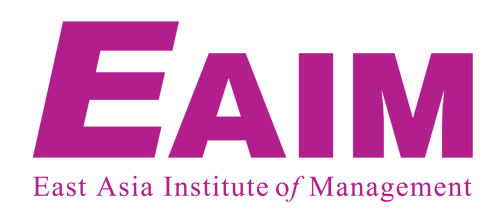As a precautionary measure, Singapore residents and long-term pass holders who have recently travelled to mainland China within the last 14 days are placed on a 14-day leave of absence (LOA) from the day of their return to Singapore, with effect from 31 January 2020.

WHO SHOULD BE ON LEAVE OF ABSENCE
With effect from 31 January 2020 6pm, the following returning groups are to be placed on a 14-day leave of absence from the day of their return to Singapore from mainland China:
a. Residents (Singaporean Citizens/ PRs) with recent travel history to mainland China within the last 14 days; and
b. Long-term pass holders (including Work Passes and Permits, Student Pass, Dependent Pass and Long-term Visit Pass) with recent travel history to mainland China within the last 14 days.
WHAT MUST BE DONE DURING YOUR LEAVE OF ABSENCE
· Remain in your place of residence as much as possible during your leave of absence.
· Minimise visitors to your residence. You should maintain a record of persons you come into close contact with during your leave of absence.
· You may leave your place of residence to purchase daily necessities or to attend to important personal matters. However, you should minimise your time spent in public spaces and contact with other individuals, and return to your place of residence as quickly as possible. If necessary, you may opt for home delivery services or enlist the assistance of others for your daily necessities.
· You should avoid going to crowded places and attending social gatherings during your leave of absence.
CHECK FOR SYMPTOMS
· Monitor yourself for fever (e.g. fever ≥38°C)and respiratory symptoms such as cough and breathlessness.
· If you develop fever, cough or breathlessness, or are feeling unwell, you should seek medical attention immediately at any outpatient clinic. Please inform the staff and doctor of your travel history. Wear a surgical mask before leaving your residence and avoid taking public transport. Your doctor will assess and refer you to hospital for further assessment, including testing for 2019-nCoVif necessary. If you do not have any symptoms, you do not need to see a doctor or go to a hospital to be tested for the presence of the infection.
· In emergency situations (e.g. difficulty in breathing), you should call 995 for an ambulance to take you to hospital. Please inform the 995 operator of your travel history to mainland China.
· Persons on leave of absence may resume normal activities such as attending work and school, after 14 days from returning from China, if they remain well.
OBSERVE GOOD PERSONAL HYGIENE
· Maintain good personal hygiene, including hand washing with soap and water or use of alcohol-based hand rub.
· Cover your mouth when coughing or sneezing.
· Maintain good indoor ventilation.
· Avoid sharing food, crockery, utensils and other personal hygiene items.
INDIVIDUALS SHARING ROOM / APARTMENT WITH PERSONS ON LEAVE OF ABSENCE
· While it is not necessary to be segregated from the person placed under LOA and you can continue to share the same room/apartment, you are encouraged to reduce interaction and minimise contact with them. For example, you can avoid close and sustained contact by not sharing a bed, limiting the time spent together at common areas within the apartment, having separate meal times, ensuring proper ventilation etc.
· Avoid sharing food, crockery, utensils and other personal hygiene items.
· Maintain good personal hygiene at all times. This includes frequent flushing of toilets, hand washing with soap and water before and after handling food or eating, and after going to toilet.
PERSONAL HYGIENE AWARENESS
1. Cover your mouth when coughing or sneezing
2. Maintain good indoor ventilation
3. Avoid sharing food, crockery, utensils and other personal hygiene items
4. Avoid physical contact such as shaking hands and avoid touching your face or rubbing your eyes
5. Maintain good personal hygiene, including hand washing with soap and water, or the use of alcohol-based hand rubs
6. Proper hand washing requires soap and water. The constant rubbing action helps soap break down the grease and dirt that carry most germs. Washing your hands for at least 15 to 30 seconds with soap and water does not just make your hands smell fresh but also reduces germ count by up to 99%
7. Follow these 8 simple steps to keep your hands clean:
a. Palm to palm
b. Between fingers
c. Back of hands
d. Base of thumbs
e. Back of fingers
f. Fingernails
g. Wrists
h. Rinse and wipe dry

Source: Health Promotion Board
HOW TO WEAR A SURGICAL MASK
1. Unfold the pleats. Make sure they are facing down.
2. Place mask on your face with the non-absorbent side (blue or green) side facing outwards, with the metallic strip resting on your nose.
3. Apply elastic loops around the ears, or tie the strings behind your head and neck.
4. Apply the metallic strip securely over the bridge of the nose. Make sure it conforms to your nose.
5. Ensure that the mask fully covers the nose, mouth and is stretched gently over the chin. Make sure there are no gaps on either side of the mask.
6. Change mask if it becomes moist or damaged.

TEMPERATURE TAKING
When to take your temperature:
1. Wait for 30 minutes before temperature taking if you have just exercised, eaten, drank, showered or been outdoors
How to take your temperature:
2. There are different ways of temperature taking for the different types of thermometers available
Glass thermometer
3. Wash the thermometer bulb with soap and water before use
4. Shake the thermometer a few times to bring the level of the mercury below 35 C
5. Temperatures can be taken from the armpit or mouth
Armpit reading
6. Place the thermometer bulb under your armpit. Fold your arm across your chest to hold the thermometer in place. Remove the thermometer and read the temperature after 5 minutes
Oral reading
7. Place the thermometer bulb under your tongue. Close your mouth and do not talk or bite the thermometer. Remove the thermometer and read the temperature after 3 minutes
8. Wash the bulb of the thermometer with soap and water after use
Digital thermometer
9. Wash the area of the thermometer bulb with soap and water before use
10. Switch on the thermometer and wait until it is ready to register a reading
11. Temperatures can be taken from the armpit or mouth
Armpit reading
12. Place the thermometer bulb under your armpit. Fold your arm across your chest to hold the thermometer in place. The thermometer will beep to signal that the temperature display is ready for reading. Remove the thermometer and read the temperature
Oral reading
13. Place the thermometer bulb under your tongue. Close your mouth and do not talk or bite the thermometer. The thermometer will beep to signal that the temperature display is ready for reading. Remove the thermometer and read the temperature
14. Wash the thermometer bulb with soap and water after use
Ear (tympanic) thermometer
15. Place a new disposable cap over the probe
16. Switch on the thermometer
17. Pull the ear backwards and upwards to straighten the ear canal when the thermometer is ready to register a reading
18. Insert the thermometer’s probe into the ear canal
19. Press the activation button and hold until a reading appears (some models may beep when it is ready for a reading)
20. Remove the thermometer and read the temperature
21. Discard cap after use (use a new cap for every temperature taking)
Remember:
· It is important to read the manufacturer’s instructions on the proper use of the thermometer
· When washing glass or digital thermometers, wash only the area in contact with the mouth/skin as the thermometer may not be waterproof
· Do not talk when taking an oral temperature or move about when taking an armpit temperature
Did you know...
· Temperatures taken at different parts of the body present different readings – those taken from the armpit are lower than readings from the mouth and ear
· For adults: if the armpit temperature is over 37.0 C, the oral temperature is over 37.3 C, or the ear temperature is over 37.7 C, you have a fever
· Children (below 12 years) have a fever if the armpit temperature is over 37.2 C, the oral temperature is over 37.5 C or the ear temperature is over 37.9 C
· The normal temperature for healthy adults and children ranges from 36.2 C to 37.2 C and the average normal temperature is taken as 37.0 C
· Children tend to have higher body temperatures due to higher metabolic rates
· Women who are ovulating may have temperatures that are 0.5 C higher due to hormonal changes in their bodies
· Adults over 65 years of age may have temperatures that are 0.3 C lower because of lower metabolic rates
· The times of the month and day also affect your temperature. The body is at its lowest temperature at 3am when it is at rest, and at its highest at 6pm after a busy day. To ensure accurate readings, it is advisable to take your temperature at the same time every day





